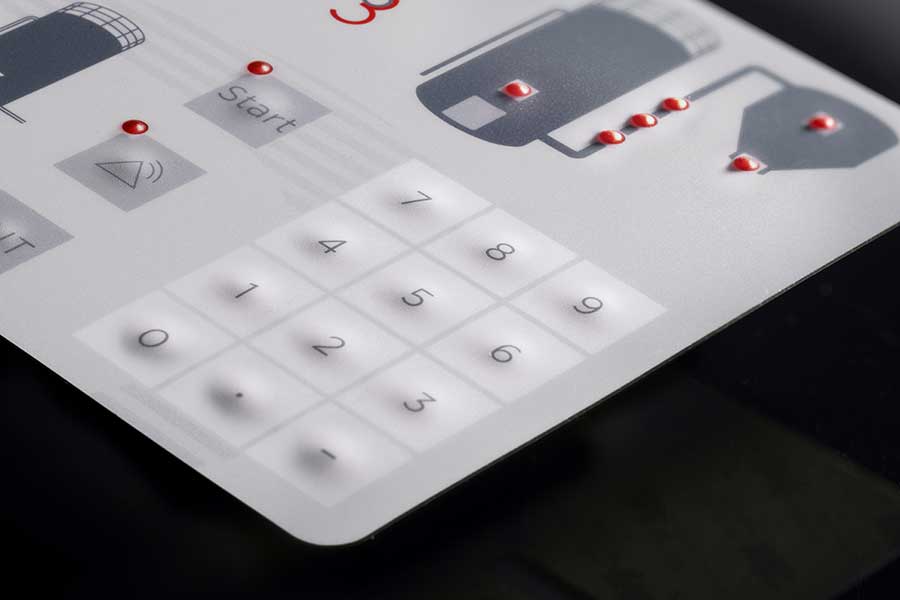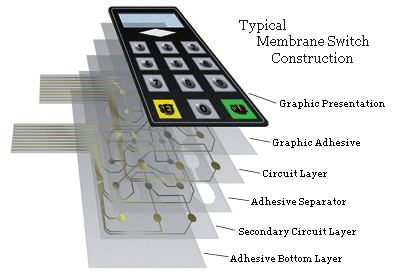Every well-executed product line begins with partnering with the right membrane switch manufacturer early on.
Everything About Membrane Layer Change: Recognizing Its Layout and Performance
When you believe regarding the control user interfaces in contemporary tools, membrane buttons frequently come to mind. Let's explore what collections membrane layer switches over apart from various other control systems.
What Are Membrane Layer Buttons?

Membrane layer switches can additionally be personalized relating to form, size, and graphics, allowing suppliers to develop distinct interfaces customized to details products. Overall, membrane layer switches play a substantial role in boosting user experience throughout a broad selection of applications.
How Membrane Layer Switches Work
When you press a key on a membrane button, it turns on a simple yet effective system. The top layer, frequently made from adaptable product, lowers onto a conductive layer underneath it. This activity bridges the gap between conductive traces, finishing an electrical circuit. As quickly as the circuit shuts, it sends a signal to the device's controller, which analyzes your input.
You'll discover that the responsive feedback differs based upon the button style, using either a soft click or a much more obvious feedback. As soon as you release the secret, the membrane layer returns to its initial position, reopening the circuit and stopping the signal. This procedure happens practically instantly, ensuring a receptive user experience.
Membrane switches are popular as a result of their toughness and resistance to dust and dampness, making them suitable for different applications, from house devices to medical devices. Understanding this procedure helps you value their widespread use.
Key Components of Membrane Layer Buttons
Recognizing the key components of membrane layer switches is basic for comprehending their capability and style. At the core, you'll discover the visuals overlay, which offers the visual interface for individuals. Underneath that, there's a spacer layer that divides the circuit layers, ensuring that they do not make call up until pushed. The circuit layer is where the magic takes place; it contains conductive traces that complete the circuit when you press the switch. Another important component is the sticky backing, permitting the switch to stick to surfaces safely. Ultimately, the protective layer guards against environmental aspects and put on, expanding the button's life expectancy. Each part plays a significant role in making sure dependable performance and user interaction. By comprehending these components, you'll get insight right into exactly how membrane switches over run and their significance in numerous applications.
Materials Made Use Of in Membrane Switch Over Style
The performance and sturdiness of membrane layer changes heavily depend on the products utilized in their design. You generally experience polyester and polycarbonate as key substrates as a result of their excellent stamina and flexibility. These products stand up to scratches and chemicals, making them suitable for requiring settings.
The conductive layers often use silver or carbon, picked for their reliability and conductivity. membrane switch manufacturer. Silver offers remarkable efficiency, while carbon is a cost-efficient option. For the overlay, you may take into consideration a matte or glossy coating, relying on your aesthetic demands and user experience
Make certain to pick adhesives that stand up to environmental variables like temperature level and humidity. Choosing the right materials will certainly guarantee your membrane layer switch stands the test of time.
Layout Factors To Consider for Membrane Layer Buttons
While creating membrane buttons, it's essential to take right into account various factors that affect their functionality and individual experience. Start by focusing on the layout and button dimension; make certain they're user-friendly and very easy to navigate.
Verify your style suits environmental aspects, like wetness or temperature level variants, which can influence performance. By meticulously considering these aspects, you'll create a membrane layer switch that enhances functionality and contentment.
Applications of Membrane Layer Buttons
Membrane buttons are functional elements discovered in different applications, from commercial tools to consumer electronics. You'll see their effect in makers that image source call for resilient interfaces and in devices that take advantage of streamlined styles. Comprehending these applications assists you value the performance and usefulness of membrane layer switches in daily modern technology.
Industrial Tools Use
When you're looking to boost the functionality of commercial tools, membrane buttons offer a reliable option that combines durability with straightforward layout. These switches are excellent for severe settings, providing resistance to dust, dampness, and chemicals. Accept membrane layer buttons to enhance your procedures and improve general performance.
Customer Electronics Assimilation
In the domain name of customer electronics, membrane layer buttons play an essential role in boosting individual interaction and device capability. Membrane layer switches also guarantee toughness and resistance to dirt and wetness, extending the lifespan of your electronic devices. By selecting membrane switches, you boost not simply the capability however additionally the style of your devices, making everyday communications smooth and satisfying.
Advantages and Drawbacks of Membrane Layer Buttons
While membrane switches supply a range of benefits, they likewise feature some drawbacks that you must consider. One substantial advantage is their small layout, making them perfect for space-constrained applications. They're likewise cost-effective, giving a resilient solution with a reduced manufacturing cost. Additionally, their smooth surface is simple to tidy, boosting health in environments like healthcare facilities.

Nonetheless, there are disadvantages. Membrane buttons can have a shorter lifespan compared to mechanical buttons, especially under heavy usage. They can likewise be much less responsive, which could influence user comments during operation. Moreover, if harmed, repairing them can be challenging and frequently calls for complete replacement. Ultimately, their sensitivity to extreme temperature levels and environmental problems might limit their efficiency in certain settings. Balancing these advantages and disadvantages will assist you figure out if membrane switches are the appropriate suitable for your job.
Regularly Asked Inquiries
Exactly How Long Do Membrane Layer Changes Commonly Last?
Membrane layer switches typically last between 5 to ten years, relying on usage and environmental problems. You'll wish to assess variables like wear, direct exposure to moisture, and temperature level variations to gauge their long life successfully.
Can Membrane Layer Changes Be Customized for Specific Layouts?
Yes, you can tailor membrane layer switches to fit certain designs (membrane switch manufacturer). You'll have the freedom to select shades, forms, and formats that match your task's demands, ensuring they blend effortlessly with your general visual
What Is the Expense Array for Membrane Layer Change Production?
The expense range for membrane switch production usually drops in between $1 and $10 each, depending upon elements like layout complexity, amount, and materials. You can obtain quotes from suppliers Related Site to find the best option.

Are Membrane Switches Over Water-proof or Immune?
Membrane layer buttons can be designed to be waterproof or resistant, depending upon products made use of and building approaches. go now If you need them for damp environments, ensure you specify those requirements throughout the design procedure.
Exactly How Do Membrane Layer Switches Compare to Standard Switches?
Membrane layer switches are normally thinner and extra versatile than standard switches, providing a streamlined style. They're usually less complicated to clean and incorporate, however could not give the tactile feedback you're used to with mechanical choices.
Conclusion
